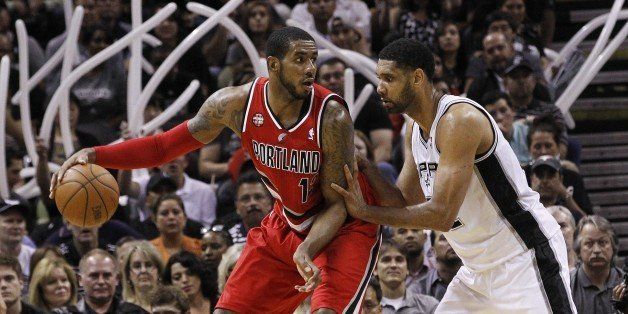
As we celebrate July 4th and our nation's independence, it's appropriate to also connect that celebration to the utter mayhem of this past week's NBA free agency. Individual rights, and the pursuit of happiness and freedom are defining hallmarks of our country. And, unquestionably, they are also the driving principles of professional sports unions.
This year's crop of NBA free agents signed for nearly $1.5 billion in the frantic 48 hours after midnight on July 1st. To many, the salaries paid to basketball players appears obscene, creating the impression that they are an overpaid workforce. Surprisingly, however, player salaries are artificially depressed due to the NBA's salary cap which restricts team payrolls, and therefore player salaries.
Rather than free, unencumbered markets for salaries that employees in other industries enjoy, the NBA negotiated for the right to deflate costs via a salary cap as a means to enhance league "competitive balance" during collective bargaining with the National Basketball Players Association (NBPA). And the salary cap successfully distributed talent across the league, as the bright lights and large regional television contracts in both New York and Los Angeles were not enough to lure the biggest free agents who spurned (Spurs?) their offers and chose "smaller markets."
Even more fascinating is that the negotiated salaries during the 2015 free agency period pale in comparison to what we'll see in 2016 and 2017. The NBA's salary cap is calculated as a percentage of league-wide basketball related income (BRI) divided by the number of teams. BRI is defined as virtually all of the income related to basketball operations, including ticket and apparel sales, and national broadcast rights, are projected for an upcoming season. That total amount is then multiplied by the negotiated percent the players get to ensure compliance with the NBA Collective Bargaining Agreement (CBA). Finally, the percent of BRI that goes to the players is then divided by the total number of teams in the league -- thus defining that year's salary cap.
The mammoth nine-year, $24 billion media rights deal the league signed with ESPN and TNT, increases BRI exponentially, and is the primary reason why salary caps will explode in the future. While it's easy to lie with statistics, this simple chart illustrates the evolution of NBA salary caps over the past several years.
While some argue that players are grossly overpaid, no one should complain about employees getting their fair share of revenues from a tremendously successful business enterprise. It is also important to remember that the owners and the league haven't always shared in the spoils of their success. Just as our country had founding fathers -- Washington, Adams, Hamilton, Jefferson, Franklin -- who fought for individual liberties and freedom, so too did players in the NBA serve as founding fathers of the NBPA. Early players to stand up and argue for better salaries and benefits include such notable NBA Hall of Famers as Bob Cousy, Tommy Heinsohn and Oscar Robertson.
And lest you think that the salary cap was a 21st century invention, the NBA had a salary cap of $55,000 per team during the 1946-47 season, it's first year in existence. Average player salaries that inaugural season were between $4,000 and $5,000 a year. Bob Cousy, a Hall of Fame point guard and member of the Boston Celtics, was a driving force behind the development of the NBPA in the 1950s. Cousy identified an established player from each NBA team and urged those selected to begin to act in solidarity.
Armed with the team representatives' support, Cousy met with NBA President Maurice Podoloff before the 1955 NBA All-Star Game and shared a list of the players' concerns. Podoloff promised various improvements in playing conditions, the creation of a pension plan, and the acknowledgement of the legitimacy of the union. Unfortunately, Podoloff stalled the implementation of these promises. Finally, Cousy contacted the AFL-CIO leadership about the creation of a formal union. At that point, the league relented and began to bargain in good faith. Finally, in 1957, the first NBA CBA was executed.
It was the leadership of these star players among others over five decades ago, fighting for their place at the negotiating table, that laid the groundwork for the explosion in player salaries being negotiated this month. Thus, as we celebrate our country's 239th birthday on July 4, 2015, remember too those individuals who recognized the need to apply those founding principles to the world's most successful basketball league.